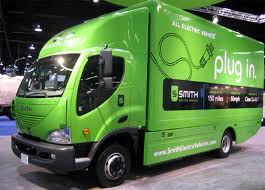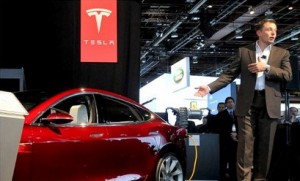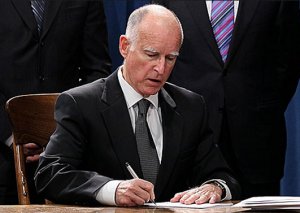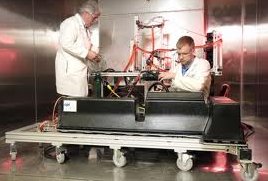 by Jon LeSage, editor and publisher, Green Auto Market
by Jon LeSage, editor and publisher, Green Auto Market
Here’s my take on the 10 most significant and interesting occurrences during the past week…….
- Smart grids, fast charging, and an open integration platform for electric vehicles were topics covered last week at Plug-In 2014 Conference in San Jose, Calif. Now in its seventh year, the annual plug-in electric vehicle (PEV) conference changed gears – there was no exhibit hall this year and a schedule with two simultaneous breakout speaker panel sessions instead of three. According to comments from attendees, it continued to be a much-needed resource for peer networking and staying current on what’s happening in the industry; the exhibit hall and extra speaker panels weren’t necessary and the conference has needed to be streamlined. During “The Last Word” panel on Wednesday afternoon, Tom Turrentine from the PH&EV Research Center, Institute of Transportation Studies, at UC Davis, talked about a study he’s been part of finding out the challenges auto dealers are going through in effectively educating customers on PEVs and charging. The other panelists, including Ed Kjaer, director, transportation electrification at Southern California Edison, and Chelsea Sexton, founder, Lightning Rod Foundation, agreed with Turrentine that education of dealers and car shoppers is still very much needed. Looking at real data from PEV driver experience over the past three-and-a-half years is another resource to tap into; along with key stakeholders (utilities, automakers, and infrastructure suppliers) setting aside technology disputes and supporting the larger movement toward electrified transportation, should be high priority, Kjaer and Sexton said. The Electric Power Research Institute (EPRI), which organizes the conference, announced an alliance with utilities and automakers to develop and demonstrate an open platform to integrate PEVs with smart grid technologies. The platform will offers customer-friendly interface where PEV drivers can more easily participate in utility PEV programs, such as rates for off-peak or nighttime charging. With more than 225,000 plug-in vehicles on US roads, these vehicles will also play a significant role as a distributed energy resource to support grid reliability, stability, and efficiency. Honda, BMW, Chrysler, Ford, General Motors, Mercedes-Benz, Mitsubishi, and Toyota have joined together with major utilities and regional transmission organizations. During another announcement at Plug-In 2014, NRG eVgo, a subsidiary of NRG Energy, Inc., said that its partnering with BMW on its new ChargeNow DC Fast program. Now, BMW i3 drivers in California can enjoy unlimited, no cost 30 minute DC fast charging, at eVgo Freedom Station® sites equipped with DC Combo Fast Charging, through 2015.
- Sales of plug-in electric vehicles were solid in July. There were 3,117 Nissan Leafs sold – 62% more than July 2013. Nissan thinks that its No Charge to Charge promotion worked well. The Chevy Volt saw its best sales month since December, with 2,020 units sold. Tesla Motors reported building 8,763 Model S units in the second quarter and delivered 7,579 of them to customers. The company expects to deliver 7,800 of them this quarter. Tesla reported second quarter revenues of $858 million, up 55% from a year ago; and the automaker saw gross margins rise to a record 26.8%.
- The California Energy Commission approved about $60 million for hydrogen fueling, battery electric vehicle and plug-in hybrid projects. About $8.1 million also has been allocated for electric vehicle placements and $4.3 million for natural gas vehicles.
- The agreement on the “Gigafactory” between Tesla Motors and Panasonic Corp. has been confirmed. Panasonic, which currently supplies battery cells to Tesla, said it will manufacture and supply cylindrical lithium-ion cells and invest in the equipment, machinery and other tools based on the two companies mutual approval. Tesla role will be to prepare, provide and manage the land, buildings, and utilities. The dollar amount Panasonic has agreed to invest hasn’t been revealed.
- Toyota Motor Corp. has a name for its $69,000 fuel cell vehicle: Mirai. That’s a Japanese word for “the future,” according to a person familiar with the decision. The US version has been called the FCV, and the car is expected to go on sale in the fall of 2015.
- The 2014 Chevy Volt with the optional Forward Collision Alert system was the only one out of 12 cars tested to earn the Insurance Institute for Highway Safety’s 2014 Top Safety Pick award. The plug-in hybrid also received an acceptable overall score in IIHS’ small overlap front crash test. The small overlap front crash test simulates a frontal collision that impacts the driver’s side corner at 40 mph. Other cars tested included the Nissan Juke, Mini Cooper Countryman, and the Ford C-Max Hybrid.
- “The Musk Who Fell to Earth” will be an upcoming episode on an upcoming episode in the 26th season of “The Simpsons.” This will be Tesla CEO Elon Musk’s second appearance on the show, though the first time that he’ll speak. During the episode, Mr. Burns, an iconic series character and billionaire nuclear energy tycoon, loses all of his money to Musk.
- The US Commerce Department is increasing penalties on Chinese imports for dumping solar cells, panels, and other equipment into the US market at very low prices to grab market share. Duties could reach as high as 165% for some Chinese producers and 44% for manufacturers in Taiwan. The tariffs will become permanent if the department confirms its initial finding that the practices hurt the US solar industry.
- The Institute of Transportation Studies at UC Davis is offering an online tool called EV Explorer helping car shoppers made a decision over the best choice for themselves – a plug-in electric vehicle, a hybrid, or a regular gasoline-engine vehicle. By entering a starting address and ending destination, EV Explorer offers a bar graph comparing the total annual energy costs of up to four vehicles simultaneously.
- A new report from Research and Markets forecasts that the global biodiesel market will grow at a compound annual rate of 8.1% between 2013 and 2018. One prominent market drivers is expected to be the advantage of using biodiesel over diesel. For those seeking a clean source of energy, biodiesel offers reductions in greenhouse gas emissions and carbon footprints.






